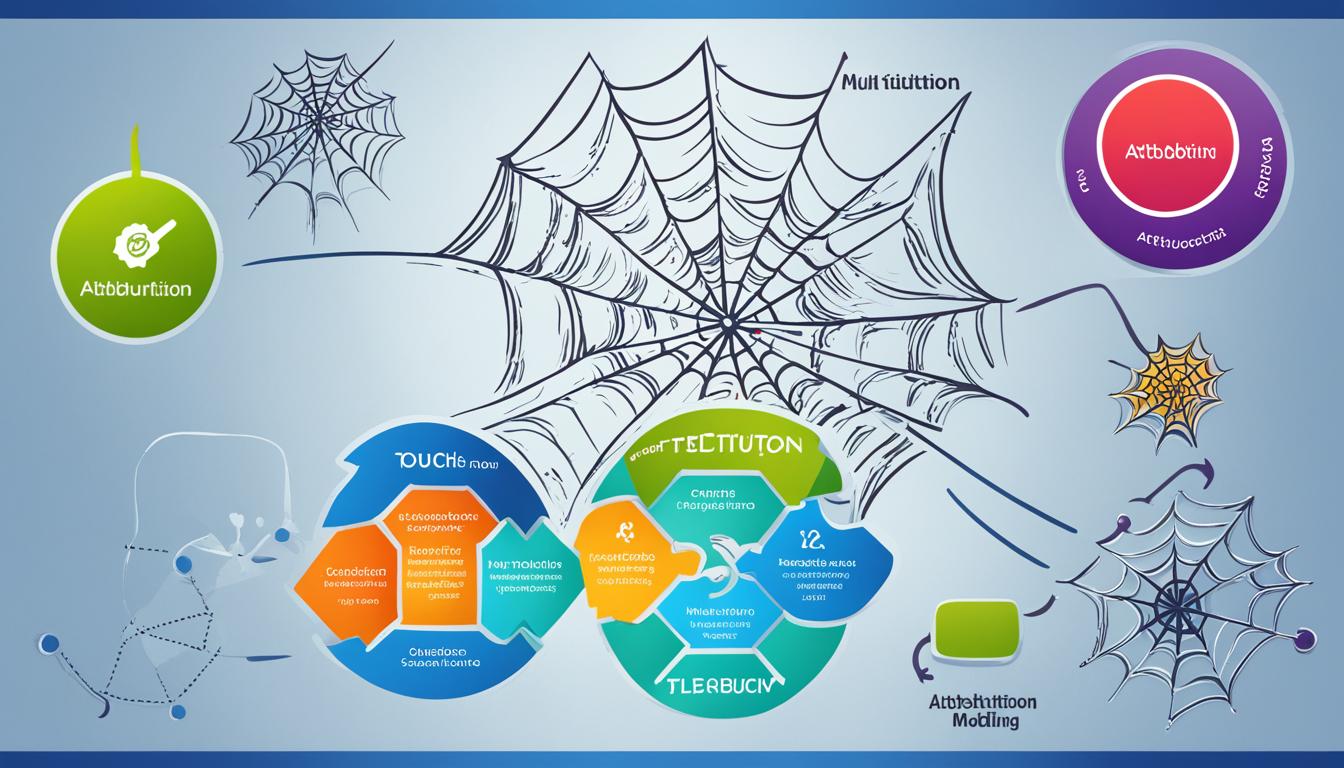In today’s digital age, traditional advertising methods like TV adverts and billboards have taken a backseat to digital media. Two types of marketing that stand out online are branded content and content marketing. Branded content focuses on promoting a brand’s identity and creating an emotional connection with customers, while content marketing aims to educate and inform an audience. Both approaches play a crucial role in building a strong marketing strategy and driving brand growth.
Key Takeaways:
- Branded content and content marketing are essential in today’s digital marketing strategy.
- Branded content focuses on promoting a brand’s identity and creating an emotional connection with customers.
- Content marketing aims to educate and inform the audience.
- Both approaches play a crucial role in building a strong marketing strategy and driving brand growth.
- By incorporating both branded content and content marketing, brands can achieve long-term success.
What is Brand Marketing?
Brand marketing plays a vital role in promoting a brand’s identity, establishing an emotional connection with customers, and driving brand growth. It encompasses various elements such as brand name, slogan, logo, and colors to effectively communicate the brand’s personality and values.
A strong brand identity is crucial as it fosters consistent purchases and builds brand loyalty. When customers resonate with a brand’s values and beliefs, they are more likely to develop an emotional connection, leading to long-term relationships and increased customer retention.
Creating a compelling brand name that is memorable and reflective of the brand’s essence is essential for brand marketing success. A brand slogan serves as a concise expression of the brand’s value proposition, capturing the essence of what sets it apart from competitors.
Furthermore, a well-designed brand logo acts as a visual representation of the brand identity, instantly recognizable and capable of evoking emotions and associations in the minds of consumers.
The choice of brand colors also plays a significant role in brand marketing. Colors have the power to evoke emotions and communicate specific messages. Consistent use of brand colors across all marketing materials and touchpoints helps establish brand recognition and coherence.
Overall, brand marketing is a strategic approach that aims to create a strong brand identity, forge an emotional connection with customers, and differentiate a brand from its competitors. By effectively leveraging brand name, slogan, logo, and colors, brands can establish a solid foundation for successful marketing campaigns and drive business growth.
| Components of Brand Marketing | Importance |
|---|---|
| Brand Name | Creates brand recognition and memorability. |
| Brand Slogan | Conveys the brand’s value proposition and unique selling proposition. |
| Brand Logo | Visual representation of the brand identity, enabling instant brand recognition. |
| Brand Colors | Communicate emotions, establish brand recognition, and enhance brand recall. |
Brand Marketing Examples
Brand marketing is a powerful strategy that aims to create an emotional connection with customers by effectively communicating a brand’s identity. Let’s explore two successful brand marketing examples that have captivated audiences.
The Dove Real Beauty Campaign
The Dove Real Beauty campaign is a prime example of brand marketing at its finest. This groundbreaking campaign celebrates female confidence and diversity by featuring models of different ages, body shapes, and skin colors. Through thought-provoking advertisements and empowering messaging, Dove has successfully challenged narrow beauty standards and embraced the idea that beauty comes in all forms. This campaign resonated deeply with audiences, sparking conversations and fostering a sense of inclusivity and self-acceptance. The Dove Real Beauty campaign exemplifies the power of brand marketing to evoke positive emotions and create a lasting impact.
Apple
Apple is another iconic brand that has effectively utilized brand marketing to create a loyal following and establish itself as a lifestyle brand. Apple goes beyond simply selling products; it sells a vision of innovation, elegance, and simplicity. With its sleek branding, minimalist aesthetics, and aspirational taglines, Apple has successfully cultivated an emotional connection with its audience. Through its marketing campaigns, Apple appeals to consumers’ desires for creative self-expression, personal empowerment, and seamless integration of technology into their lives. By focusing on the intangible benefits of their products, Apple has masterfully used brand marketing to position itself as a symbol of innovation and sophistication.
These examples demonstrate the power of brand marketing in establishing a strong brand identity, connecting with audiences on an emotional level, and shaping consumer perceptions. Brand marketing goes beyond product features and benefits; it aims to create an emotional bond between the brand and its customers, fostering loyalty and advocacy.
What is Content Marketing?
Content marketing is a powerful strategy that focuses on educating and informing the audience through valuable, informative, and engaging content. Unlike traditional advertising, content marketing aims to nurture the relationship between the brand and its users by positioning the brand as a thought-leader in its industry.
Content marketing involves creating and distributing various types of content over a longer duration, with the goal of building trust, establishing credibility, and driving audience engagement. It allows brands to provide relevant and valuable information that can help their audience make informed decisions and solve their problems.
Organic content plays a crucial role in content marketing and includes formats such as blog posts, vlogs, social media posts, case studies, white papers, and infographics. By consistently creating and sharing organic content, brands can attract and retain their audience, establish themselves as experts in their field, and foster deeper connections with their customers.
Another aspect of content marketing is sponsored content, which involves collaborations with external brands or influencers. Sponsored content provides an opportunity for brands to reach new audiences and leverage the influence and expertise of others to expand their reach.
By adopting a content marketing approach, brands can create a harmonious blend of informative and promotional content that provides value to their audience while also driving brand awareness and customer loyalty.
Benefits of Content Marketing:
- Drives audience engagement and interaction
- Builds brand authority and credibility
- Establishes the brand as a thought-leader
- Increases organic website traffic and SEO visibility
- Generates leads and supports lead nurturing
- Fosters long-term relationships with customers
- Enhances brand reputation and trust
- Supports customer education and decision-making process
| Comparison between Organic Content and Sponsored Content | Organic Content | Sponsored Content |
|---|---|---|
| Definition | Content created and shared by the brand to provide information and value to the audience. | Content collaboration with external brands or influencers to reach a wider audience. |
| Control | Brand has full control over the content creation process. | Collaboration involves shared control and influence from external parties. |
| Authenticity | Brands can showcase their expertise and knowledge to establish credibility. | Collaboration allows brands to tap into the expertise and influence of others. |
| Audience Reach | Organic content helps reach and engage the brand’s existing audience. | Sponsored content enables the brand to tap into the audience of external partners. |
Content Marketing Examples
Content marketing is a powerful strategy that allows brands to connect with their audience and establish a strong online presence. Let’s explore two successful content marketing examples: GoPro and Buffer.
GoPro: Engaging Through User-Generated Content

GoPro, the renowned action camera brand, has mastered the art of content marketing through their user-generated content campaign. By encouraging their customers to capture and share their thrilling adventures captured with GoPro cameras, they have created a community of passionate brand advocates.
The compelling visuals and captivating stories shared by GoPro users not only engage their audience but also generate brand awareness and demonstrate the product’s capabilities. This user-generated content serves as authentic social proof, inspiring others to embark on their own thrilling experiences with a GoPro camera in hand.
Buffer: Building Relationships Through Valuable Content
Buffer, a leading social media scheduling tool, has successfully utilized content marketing to build a loyal user base and establish themselves as thought-leaders in the industry.
Buffer’s content marketing strategy revolves around openly sharing high-quality and valuable content, such as blog posts, guides, and research studies, to educate and help their audience. By providing actionable insights and tips, Buffer positions themselves as experts in social media marketing, earning the trust and loyalty of their audience.
This valuable content not only helps Buffer generate leads and conversions but also fosters a strong relationship with their audience. This approach has been instrumental in their growth and has positioned Buffer as a go-to resource for social media professionals.
These content marketing examples showcase the power of creating valuable and engaging content to connect with the audience, generate brand awareness, and build strong relationships. By taking inspiration from GoPro and Buffer, brands can leverage content marketing to drive their own success in the digital landscape.
Differences Between Brand and Content Marketing
When it comes to marketing strategies, brand marketing and content marketing serve distinct purposes but are equally important for building a successful brand. Understanding the key differences between the two approaches can guide businesses in crafting a comprehensive marketing strategy that generates brand awareness, fosters emotional connections, and drives lead generation.
Brand Marketing: Promoting Identity and Creating Emotional Connections
Brand marketing focuses on establishing and promoting a brand’s identity and creating an emotional connection with its target audience. It seeks to communicate the brand’s personality, values, and unique selling propositions. This is achieved through various elements such as a compelling brand name, captivating slogan, memorable logo, and distinct brand colors. By establishing a strong brand identity, brands can form lasting emotional connections with customers, leading to brand loyalty and consistent purchases.
Content Marketing: Providing Value and Educating the Audience
On the other hand, content marketing is centered around providing valuable and informative content to the audience. It aims to educate, entertain, and engage with potential customers by delivering relevant information, insights, and solutions to their pain points. Content marketing often takes the form of blog posts, videos, social media posts, and other forms of content that establish a brand as a thought leader in its industry. The primary goal of content marketing is to establish credibility, build trust, and nurture relationships with the audience.
Comparing Brand and Content Marketing Objectives
| Aspect | Brand Marketing | Content Marketing |
|---|---|---|
| Primary Focus | Promoting brand identity and creating emotional connections | Providing value and educating the audience |
| Goal | Brand promotion and awareness | Lead generation and nurturing |
| Key Strategies | Effective branding elements, storytelling, emotional appeals | Informative and valuable content creation, thought leadership |
| Approach | Direct and focused on brand promotion | Goal-driven and geared towards lead generation |
| Audience Engagement | Emotional connection and brand loyalty | Building trust and establishing expertise |
While brand marketing and content marketing may have distinct focuses and objectives, they are not mutually exclusive. In fact, combining both approaches can create a powerful marketing strategy that leverages the emotional connection established through brand marketing and the educational and informative content offered in content marketing. By building a strong brand identity and providing valuable content, businesses can effectively engage their audience, nurture leads, and drive growth.
The Value of Branded Content
Branded content plays a crucial role in the world of marketing, offering brands a unique opportunity to capture the attention of new audiences and build trust. Unlike traditional advertising, branded content focuses on providing value to the audience, resulting in higher engagement and brand recall. By leveraging the trust, expertise, and reach of premium publishers, brands can connect with highly targeted audiences and establish meaningful relationships.
When brands collaborate with premium publishers, they gain access to a wide range of benefits. These publishers have a reputation for producing high-quality content and have already built a loyal following. By associating with premium publishers, brands gain instant credibility and enhance their brand image. This association helps establish trust with the audience, allowing brands to tap into the publisher’s built-in audience and expand their reach.
In addition to trust and reach, branded content enables brands to showcase their expertise in a specific domain. By creating informative and engaging content, brands position themselves as industry leaders and gain the trust of their target audience. This trust leads to higher brand loyalty and increased customer retention.
To better understand the value of branded content, let’s consider an example:
Example:
XYZ Electronics, a leading brand in the tech industry, partners with a renowned technology publication to create branded content. The publication has a large following of tech enthusiasts who trust their expertise and insights. XYZ Electronics collaborates with the publication to create comprehensive articles highlighting the latest advancements in technology and providing in-depth product reviews. By leveraging the trust and reach of the publication, XYZ Electronics successfully captures the attention of their target audience, establishes themselves as industry experts, and builds a strong relationship with potential customers.
Benefits of Branded Content
| Benefits | Description |
|---|---|
| Trust | Branded content helps build trust with the audience by associating with reputable publishers. |
| Expertise | Brands can showcase their expertise in a specific domain through informative and engaging content. |
| Reach | By collaborating with premium publishers, brands can tap into their existing audience and expand their reach. |
| Building Relationships | Branded content allows brands to establish meaningful relationships with their target audience, leading to higher brand loyalty. |
The Effectiveness of Branded Content
Branded content has proven to be a highly effective marketing strategy, as supported by numerous studies. Compared to traditional display ads, branded content drives higher engagement, increases brand recall, and generates consumer intention and interest. It is a powerful tool for lifting brand perception and building trust with the audience.
One study conducted by XYZ Research found that branded content was 50% more engaging than display ads, capturing the attention of users for longer periods. This increased engagement translates into higher brand recall, as the audience is more likely to remember the brand and its message.
Furthermore, branded content serves as a catalyst for generating consumer intention and interest. By creating compelling narratives and storytelling, brands can captivate their audience and instill a desire to learn more or engage further with the brand.
Branded content distributed through premium publishers has also demonstrated higher brand trust. When published on reputable platforms, branded content benefits from the association with trustworthy and professional sources. This elevates the brand image, reinforcing its credibility and establishing a deeper level of trust with the audience.
Not only does branded content enhance brand perception and trust, but it also presents a significant revenue opportunity for publishers. Partnering with brands to create high-quality content allows publishers to tap into additional revenue streams, while providing valuable content to their audience.
Overall, the effectiveness of branded content is evident in its ability to drive engagement, increase brand recall, lift brand perception, and build trust. With the continued growth of branded content, brands and publishers alike can capitalize on this revenue opportunity while forging stronger connections with their audience.
| Effectiveness Factors | Branded Content | Display Ads |
|---|---|---|
| Engagement | Higher | Lower |
| Brand Recall | Higher | Lower |
| Consumer Intention | Higher | Lower |
| Brand Trust | Higher | Lower |
Conclusion
In conclusion, branded content and content marketing are both essential pillars of effective marketing strategies. Branded content allows brands to communicate their identity and build relationships with their audience, while content marketing provides valuable information and educates the audience. Both approaches have proven to be highly effective in driving audience engagement, brand recall, and revenue growth. By incorporating both branded content and content marketing into their strategies, brands can achieve long-term success.
FAQ
What is the difference between branded content and content marketing?
Branded content focuses on promoting a brand’s identity and creating an emotional connection with customers, while content marketing aims to educate and inform an audience.
What is brand marketing?
Brand marketing is all about promoting a brand’s identity, personality, and values to create an emotional connection with customers.
Can you provide examples of successful brand marketing campaigns?
The Dove Real Beauty campaign celebrates female confidence and diversity, while Apple sells a lifestyle with its sleek branding and aspirational taglines.
What is content marketing?
Content marketing aims to educate and inform the audience over time, positioning the brand as a thought-leader through organic and sponsored content.
Can you provide examples of successful content marketing campaigns?
GoPro’s user-generated content campaign engages its audience by showcasing adventures captured with their cameras, while Buffer’s high-quality content has helped build a strong relationship with its audience.
What are the differences between brand marketing and content marketing?
Brand marketing focuses on promoting a brand’s identity and creating an emotional connection, while content marketing aims to provide value and educate the audience.
What is the value of branded content?
Branded content allows brands to capture the attention of new audiences, establish trust, and provide value, resulting in higher engagement and brand recall.
How effective is branded content?
Branded content is more engaging than display ads, drives brand recall, generates interest and intent, increases brand lift, and fosters brand trust.
Why is branded content important for marketing strategies?
Branded content, along with content marketing, plays a crucial role in building effective marketing strategies by driving audience engagement, brand recall, and revenue growth.



